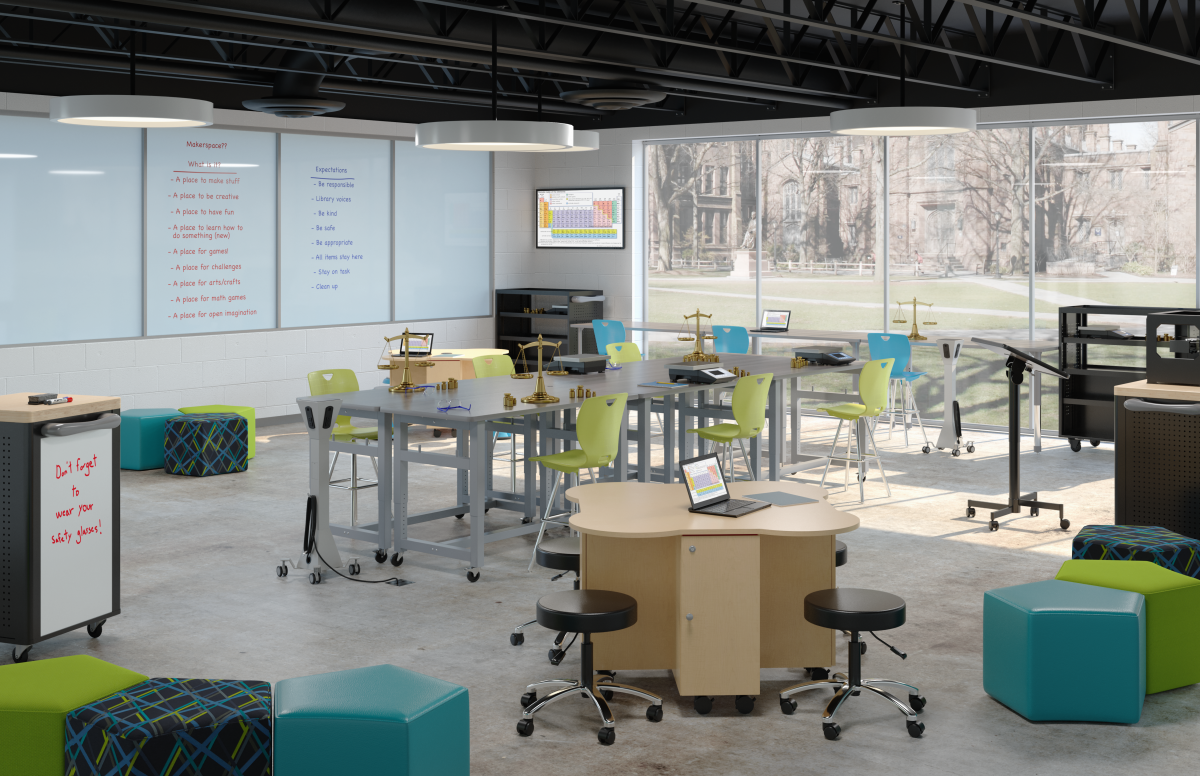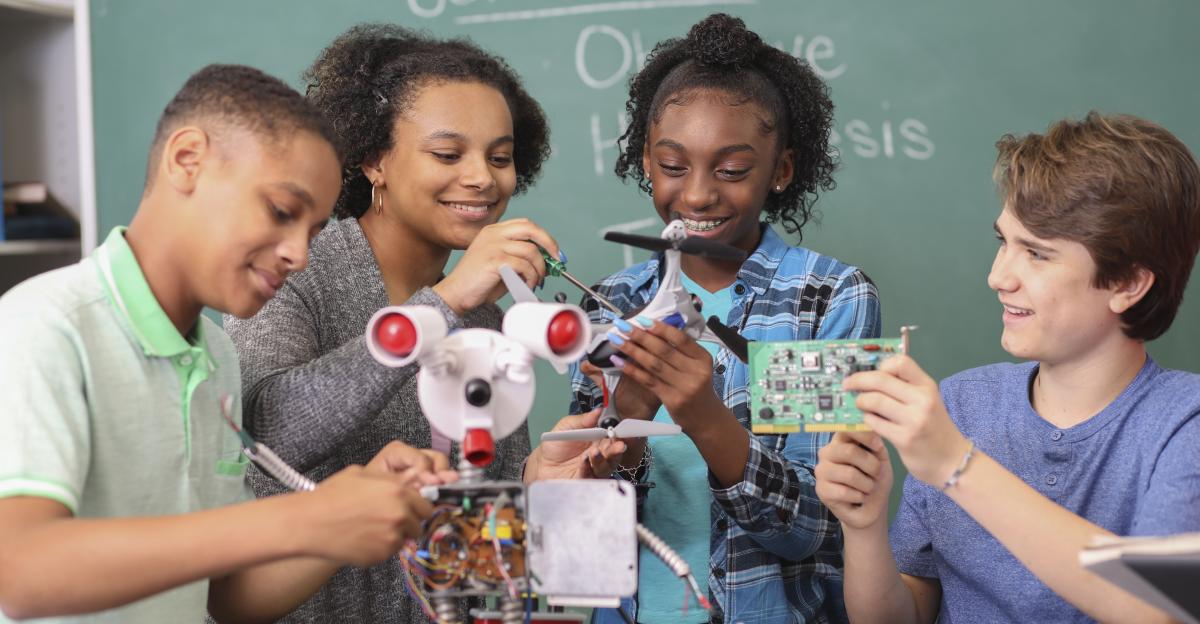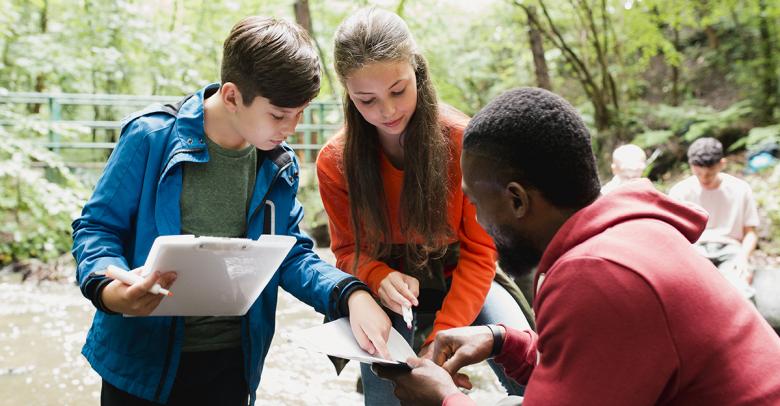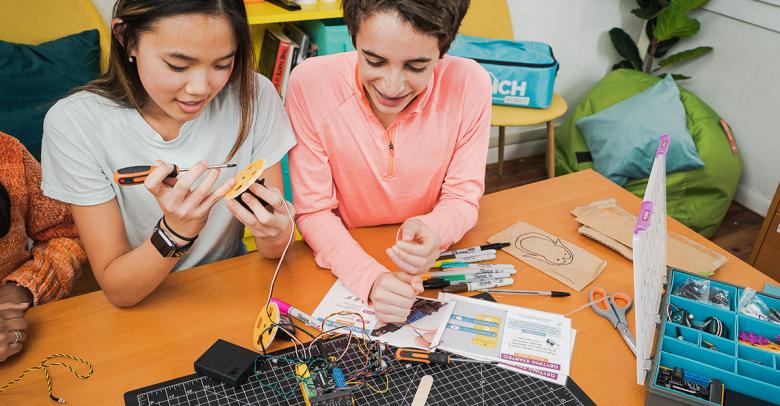When I taught science to high school students in Oklahoma, I would often set up my classroom in a way that piqued students’ curiosity as soon as they walked through the door.
If we were starting a unit on forensic science, for instance, I might stage a crime scene in the middle of the room, cordoned off by yellow crime scene tape. If we were studying the cellular structures of various organisms, I might project a striking image on the board at the front of the room.
I wanted my students to get excited about what they were about to learn that day: “Are we really gonna do that?” Anything to spark their curiosity and capture their interest from the moment they entered the room.
We’re all born naturally curious about the world. Unfortunately, too often students lose that sense of curiosity as they advance through their formal education.
Science, technology, engineering, arts, and math (STEAM) instruction provides a perfect opportunity to rekindle this natural inquisitiveness. When done well, it can tap into the wonder and awe we feel in response to the world around us. But this can only happen with the right instructional approach.
Obviously, the way lessons are structured and presented plays a critical role in delivering engaging and effective STEAM instruction. But the design of the learning environment is also a key factor.
What Should High-Quality STEAM Education Look Like
Delivering high-quality STEAM instruction is vital for many reasons.
Engaging students in STEAM learning exposes them to important career pathways and future job opportunities. It helps them become adept at solving all kinds of problems they might encounter, regardless of what career path they choose. It prepares them to be effective global citizens
because their ability to contribute to an increasingly complex society depends on STEAM literacy. And it helps them understand that it’s okay to fail: Their first few approaches to solving a problem might not work, but they can learn from those failures and keep trying. (It took Edison 2,774 attempts to design the filament that made the lightbulb a commercial success.)
For students to get the most out of their STEAM learning experiences, here are four key qualities these experiences should share:
- Hands-on: High-quality STEAM learning experiences put students in the driver’s seat by having them engage in learning by doing.
- Inquiry-based: STEAM learning experiences should be driven by questions that students are challenged to answer or problems they’re asked to solve. The best questions and problems should be complex in nature, requiring much more than a simple response that can be found by searching Google.
- Authentic: The problems that students are tasked with solving should be grounded in authentic, real-world scenarios, so the learning is relevant to students’ lives and to actual STEAM careers.
- Collaborative: Students need to learn how to work together to answer questions and solve
problems. Collaboration is a critical workforce skill for success in any job, and the STEAM disciplines lend themselves to collaborative learning experiences in which students work in small groups to accomplish tasks.
Designing Effective STEAM Learning Spaces
How a classroom or other learning space is designed, furnished, and equipped has a significant effect on the type and quality of instruction that takes place there.
A well-designed environment can facilitate STEAM instruction by effectively supporting rich, engaging learning experiences that share these key characteristics. On the other hand, a poorly designed environment can make high-quality STEAM instruction harder to achieve.
Here are five tips for designing classrooms, labs, and other learning spaces that engage students in STEAM education that is hands-on, inquiry-based, authentic, and collaborative.
1. Create Open, Flexible, Multi-use Spaces
Think about how you can make these spaces as flexible and adaptable as possible. Ideally, students should be able to shift seamlessly from one type of learning activity to another. One way to accomplish this goal is by furnishing STEAM learning spaces with movable, flexible furniture that can be reconfigured easily to support a variety of student groupings and learning tasks.
For example, desks, tables, and chairs with built-in casters or ball glides can be moved around the room quickly. And desks that are configured in multiple configurations can support different group sizes for collaborative learning.

2. Encourage Hands-On Learning and Exploration
For STEAM learning environments to support hands-on learning, students will need plenty of space to move around and work safely. It’s hard to create amazing learning experiences within a small space.
Students will also need age-appropriate materials and activities that support hands-on learning and exploration. For younger students, these might include sensory science centers or exploration stations; for older students, they might include STEM learning kits or robotics and coding kits.
In addition, older students will need power and connectivity to support the technologies they’re using. For instance, this adjustable-height activity table facilitates collaboration and includes a built-in power source in the center for students to plug in their mobile devices and other technologies.
3. Consider Factors Such As Workspaces, Storage, and Safety
Students will need work surfaces to complete hands-on projects, and they’ll also need places to store their materials. Furniture that contains built-in storage options, such as this mobile STEAM table for young children, can save space and make smaller learning environments more functional. In addition, consider heavy-duty project tables with shelving and power cord organization to support built-in-storage and spacious work surfaces.
Student safety is an important consideration as well. What special safety equipment will you need? Is the space well-ventilated? Does it have plenty of light? Are there clear walkways between all workspaces, equipment, and exits?
4. Invest in Modern Tools and Equipment
Talk with STEAM-based businesses in your area to learn what kinds of modern tools and equipment their employees use on a daily basis. Obviously, high-end lab equipment may be cost-prohibitive for K-12 schools, but items such as 3D printers, spectrometers, and high-powered microscopes are certainly within reach.
The more authentic the experiences are for students in STEAM classrooms, the better prepared they’ll be for professional environments when they graduate—and the more motivated they’ll be to excel.
5. Embrace Chaos
When STEAM learning is hands-on, inquiry-based, connected to authentic challenges and careers, and happens within a collaborative and supportive learning environment, the results can be amazing.
Think about these factors as you design classrooms and other environments that facilitate high-quality STEAM learning experiences. And don’t be afraid to embrace chaos.
When done correctly, STEAM learning isn’t neat and tidy. It’s messy, experimental, and filled with trial and error. As educators, we must give students the space to try out their ideas, fail, and learn from their experiences.
To learn more, go to Stem – Steam | School Specialty.

Heidi Launius is a subject matter expert in science for School Specialty. She has more than 17 years of experience as a STEAM
educator.






Leave a Reply